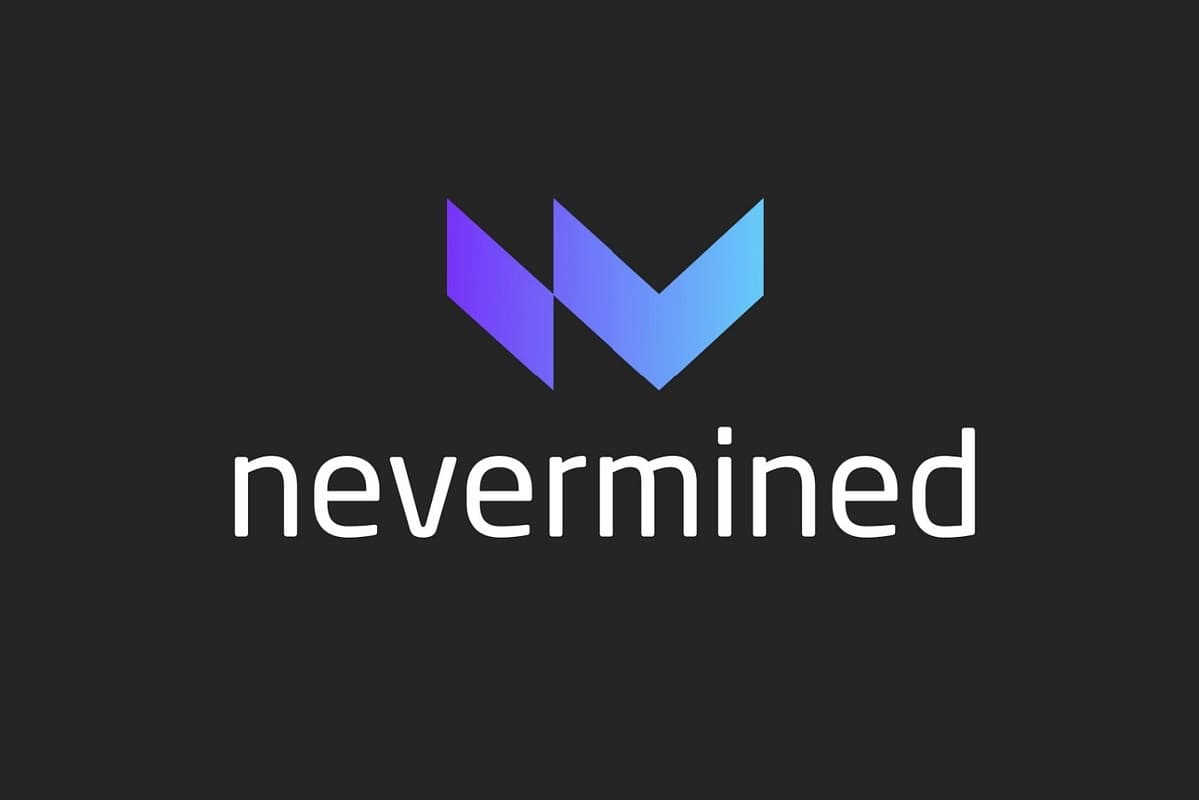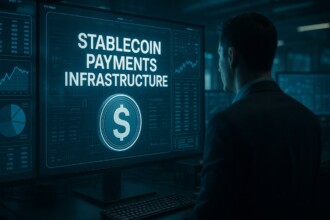“We’re still effectively in the “early 90’s internet” phase of AI at the moment. […] as we unlock AI capabilities, especially those semi-autonomous or autonomous in nature, we begin to see what the future has in store. The possibilities of AI applications are conceivably endless, limited perhaps only by imagination and energy production,” says Don Gossen, co-founder of Nevermined.

PaySpace spoke to Don Gossen, co-founder of Nevermined – the AI payments protocol delivering the Web3 standard for AI-to-AI transactions and one of the first companies to enable AI-to-AI transactions, letting you pay your AI agent and get paid via Stripe or crypto – about the future of autonomous AI payments.
- In one of your interviews last year, you said AI development was still in the basement, not even at the ground floor level. What changed in a year? How would you describe the current state of AI?
What I was trying to articulate in that interview is how nascent the space is despite all of the recent advancements. We’re still effectively in the “early 90’s internet” phase of AI at the moment. Up until 24 months ago, AI was viewed largely as fringe, experimental or “deep” technology. But now people have woken up to the capabilities that AI enables, and we’re witnessing a massive increase of experimentation in the proverbial “basement” to see what works and what’s possible.
I would describe the current state of AI as having now entered the mainstream, though in concept more than in practice at the moment. Right now the AI applications that are being developed are like peer to peer messaging 30 years ago. AI has officially entered the lexicon, and the general population is beginning to recognize its application, but we obviously are nowhere near a level of reliance and ubiquity that we have on other paradigm-shifting technologies.
And this is why we find the space so exciting! The possibilities of AI applications are conceivably endless, limited perhaps only by imagination and energy production. Back in the early 90’s, ideas that are now mainstays, like VOIP and video calling, were largely still science fiction and confined mostly to PoCs. Wholly new processes, like getting in a strangers car to get from one place to another, were not even conceived at that point.
So as we unlock AI capabilities, especially those semi-autonomous or autonomous in nature, we begin to see what the future has in store. Nevermined’s vision is that we’re witnessing the rise of a new consumer that will manifest as trillions of AI agents, and these agents will change commerce forever.
- AI agents and autonomous AI payments have become quite a buzz in the DeFi segment. At the same time, the use of AI in the more traditional payment segment is still mainly limited to fraud detection and customer support chatbots. What do you think is needed for truly AI-driven payments to move from niche initiatives to mainstream practice?
The augmentation of payments with AI, like for fraud detection, credit risk analysis, etc., will continue to advance. What will emerge next is a shift to user centric AI, instead of AI oriented only to improving business processes. We expect customers to start to delegate decision making responsibilities to user-focused AI agents, and with that the ability to transact as well. No longer is AI solely the concern of large companies that can afford it, but rather a utilitarian tool that will soon be omnipresent in the consumer journey.
User centric AI will extend AI utility from its traditional application space helping businesses to a new application space helping consumers. A good article on this shift is called “Where are the customer bots?” by David Birch and Kirsty Rutter (source). This shift will enable sophisticated AI products for the consumers instead of just for large enterprises, as historically has been the case. The resulting explosion in AI adoption for support and interactivity will require users to integrate all aspects of their digital “beings”, likely including bank accounts and thereby bestowing the ability to transact on AI agents.
At Nevermined, we call the above type scenarios silicon-based agent (aka AI agent) to carbon-based agent (aka human agent) interactions, and vice versa. While these are interesting applications, we believe they somewhat miss the forest for the trees. Anthropomorhizing AI does a disservice to the outlook for agentic AI by coupling AI capabilities with our own, thus potentially limiting the design space and scope of silicon-to-silicon agent interactions. What truly motivates us at Nevermined are the net-new use cases that will manifest from AI agents buying and selling services and assets amongst themselves, something we refer to as Agent Bartering, or Universal Bartering.
To catalyze growth, we need more agents transacting. In the short term, this requires a focus on the development of use case specific multi-agent systems. Encouragingly, we have seen the evolution of focus from building simple AI enabled apps, to the development of AI agents, and now we are seeing more companies being financed to address and support multi-agent systems. It’s arguable that this observable progression from simple to complex systems is occurring faster than expected.
- At the intersection of AI and Web3, where do you see the most potential for autonomous payments? What innovative use cases can this unity create?
In our opinion, the future of AI-Commerce is Universal Bartering. Initially, as we have seen, most commercial activity is between carbon-based and silicon-based agents, with humans using AIs. What we are currently seeing develop is an increase in multi-agent systems, in which silicon-based agents are the primary counterparts. Both these environments require accurate metering of agent usage and translation into a cost to the associated user, whether carbon-based or silicon-based.
The payment is simply the means of transaction. Assuming agent services must be compensated, in a state of the world where agents exercise sovereign autonomy and transact directly with one another, all payments are, by definition, autonomous.
In this future state, we believe we will see more P2P commercial activity at massive scale. This massive P2P commercial system will ultimately become a universal (possibly interplanetary) bartering system, driven by the virtually limitless connections that an AI agent can make with other AI-driven commercial agents.
Humans are unable to create global scale bartering systems for many reasons. One is that our Dunbar’s Number limits the number of connections any human can manage to about 150 at any point in time. To counteract these limitations, we’ve adopted economic mediums of exchange and homogenous goods markets that allow us to trustlessly transact at scale by removing the need to trust the counterparty; we only need to trust the means of transacting.
AI agents, on the other hand, are not limited by this connectivity constraint. It is therefore conceivable that in the future, AI agents will trade with one another directly in claims against their services and assets. Price will be broadcast, discovered and negotiated in real time by trillions of agents within the same ecosystem. Multi-party deals will be made where disparate, seemingly unrelated agents will combine to transact collectively across thousands or even millions of near-real time transactions. In our opinion all that’s required from an architectural point of view to power this new economy is freely tradable and redeemable claims against an agent’s services or assets, and such consideration is factored into Nevermined’s design choices.
To get to this state, we must identify core capabilities, and then scenario plan back to today. If we believe that AI agents will ultimately end up bartering with one another, determining how we get there is important as this will require evolution of the payments system. For an AI bartering system to work, AI agents will need to trade on their own discrete services and / or assets. Obviously, AI-commerce will not begin as a bartering system, but will require an intermediary step that recognizes each AI agent’s service or asset. With Nevermined, these services and assets are uniquely represented by the AI agent’s credits, a non-fungible on-chain instrument redeemable uniquely against a particular agent’s service mix . However, we bootstrap this future economy with agents simply trading these discrete offerings and capabilities against traditional stores of value (i.e. fiat or crypto). Next, agents can pay and get paid in other agents’ credits. Finally, agent’s can evolve to negotiating directly with each other for each service or asset on offer by any and all agents.
For this reason, we believe we are thoroughly future proofing Nevermined with our current design approach and architecture.
- Can you tell us more about AI commerce? What is it, and how it works?
AI-Commerce is the theory that we are witnessing the rise of a new consumer that will manifest as trillions of AI agents, and that these agents will change commerce forever. AI agents will require a new system of transacting which will primarily focus on silicon-based actors transacting with each other, but will occasionally involve interacting with carbon-based actors (aka humans) as well. The systems required for these silicon-based agents to transact are largely absent today, nor does there exist much insight into their drivers for transacting. What we do know is that these AI agents will not have bank accounts, nor will they need companies to exist. If we assume we’re still in the 90’s when comparing the emergence of AI and its current level of impact to the rollout of the internet, it’s impossible to conceive how AI-to-AI interaction at scale will truly manifest.
However, what we know is that a new payments protocol – with payments being the means and process of transaction – is needed to facilitate AI-to-AI interactions at scale and power this future of AI-Commerce.
In order to fully understand the nuance of AI agent payments, you must understand how AI agents work. Each AI agent, from a technical point of view, crudely resembles a platform that offers a set of tools that can be called upon. Which tools are invoked when provisioning a response is dependent on the input request to the agent.
Here is where the complexity begins. AI agents are designed to take in dynamic requests, and invoke a variable set of services or tools to respond to the input. This variable response has an associated variable cost to it that must be transferred to the requestor. This is unlike most contemporary platforms, which take relatively static inputs (i.e. highly formatted queries) that limit the complexity of the interface, and respond based on predefined tool selections. In the case of an AI agent, the tools invoked to respond to a request can have associated costs that differ by orders of magnitude. Accounting for this variability efficiently and accurately is non-trivial, and not something most AI builders are familiar or comfortable with.
Take, for example, two users that are using the same AI agent. One user is a simple user that makes simple requests. The other user is a power user that makes complex requests. Both use the same interface to make requests to the same agent. For the sake of this example, let’s also say the AI agent is using the GPT series of models to source responses. Depending on the complexity of the request, the agent will route to the optimal model to provide a satisfactory inference.
First, the simple user submits a request to the agent. The agent’s backend then decomposes the request, and optimally routes to the most cost efficient model. In this case, the agent uses GPT3.5 to source the response. Next, the power user submits a multimodal request to the AI agent. Again, the agent’s backend decomposes the request, and routes to the optimal model that can provide a response. In this case, that’s GPT4 due to the multimodality of the request.
As described in the example, the agent optimally routes requests to the backend tools that will provide the most satisfactory response. In this case, the simple request gets routed to GPT3.5, while the more complicated request gets routed to GPT4. This variable sourcing of response comes with a variable cost, which can be orders of magnitude in difference.
Unfortunately, existing payments systems, whether in Web2 or Web3, are too static in nature to handle this variable selection complexity. Stripe*, for instance, was developed to sell t-shirts on the internet, not to sell the clothes that specifically look best on you. It’s because of the dynamic nature of an AI agent’s input, combined with the variability of the response, and the associated cost variability, that a new payment system for AI agents is needed.
To account for the dynamic nature of AI agents’ capabilities, Nevermined employs an established usage design for software platforms called License Tokenization. Not to be confused with crypto tokenization, License Tokenization is a licensing model that enables flexibility and modularity by design. More traditional usage designs require platform users to specify who will use each tool (Named User License) or how many will use each tool (Concurrent Access License), as well how many times and / or how long each tool will be used. The explicit nature of these license designs makes them cumbersome to set up, maintain and enforce, requiring complicated agreements and administrative software.
License Tokenization, on the other hand, simplifies the process by enabling access to a system or platform through the acquisition of a set of redeemable tokens / credits. Each tool within that system is set with its own discrete redemption criteria, managed via tokens, so that when a user engages with a specific tool, the requisite number of tokens for that specific tool are redeemed from the user’s bucket of tokens. This allows any user or set of users to access any tool within the system or platform, so long as they hold enough tokens for the specific tool that they are using.
AI agents are architected in a similar fashion to a platform, consisting of a set of tools, like a series of models (i.e. the GPT series from OpenAI), that can be called upon discreetly, or in combination, to source a response based on a user request. To enable engagement flexibility for each tool, Nevermined employs a License Tokenization design. This means that a user can gain access to an AI agent by acquiring that agent’s tokens / credits. Once this is done, the user can make requests to the agent which are in turn routed along the optimal response path among its underlying tools and services, each with their own specific redemption criteria. To the extent that one response is more computationally intensive than the next, the mix of employed tools will differ, and thus also the number of tokens redeemed.
Where Nevermined differs from traditional License Tokenizations schemes is that we have brought the tokens / credits on-chain, instead of managing the system of unit accounting in a centralized, closed database. This creates a potential hybrid approach to metering usage, with the possibility of on-chain credits being managed by an off-chain metering system that is agent specific. The added advantage of bringing credits on-chain is the ability for the agent’s service mix, and thus computational power, to be uniquely represented by freely tradable on-chain claims. This commoditization of the agent through uniquely redeemable claims is a critical factor in unlocking the potential of direct AI-to-AI commerce.
If we return to the above example, where two sets of users (simple and power user) engage with the same AI agent, we can now see how the Nevermined credits component acts as a system of unit accounting for the AI agent. In this example, let’s say the credits cost $10 for 10,000 credits. Both the simple and power users must first purchase the credits before they can engage with the AI agent, so they each pay $10 and receive 10,000 credits in return. What has also been set for each AI agent service is the redemption criteria. In this example, let’s say the redemption criteria for invoking GPT3.5 is set to 10 credits, while the redemption criteria is set to 400 credits for redeeming GPT4. This means that when the simple user submits a simple request to the AI agent, which in turn uses GPT3.5 to provide a response, the simple user has 10 credits deducted from their bucket of 10,000. On the other hand, the power user has 400 credits deducted from their bucket of 10,000 due to the invocation of GPT4 in response to the multi-modal request made by the power user.
In a contemporary License Tokenization system, most platforms would have their own usage tokens managed within their own, centralized unit accounting database. In fact, this is what Metronome does for OpenAI, Databricks, etc. This means that OpenAI has its own set of tokens independent from Databricks’ set of tokens. A problem with this centralized design is that, should multiple service vendors want to combine their tools within a given agent (i.e. if wanting to combine OpenAI and Databricks tools and services to make an agent), a net-new set of tokens and system of unit accounting would need to be set up each time this combinatorial approach takes place. This adds an entirely new set of complexities to AI agent development given that each vendor needs to negotiate with the other vendors, and then the system of unit accounting either needs to be collectively administered by all counterparties, or entrusted to a single counterparty.
Nevermined’s approach provides far greater flexibility and transparency to the ecosystem. Because of the open nature of the Nevermined credits system, multiple agent counterparties, as well as AI services from different third parties, can leverage the same set of redemption credits, creating a network effect for each AI agent and its capabilities. This means that Databricks could use OpenAI’s credits, or vice versa, with each setting and managing their own credits redemption criteria for their own specific sets of tools and services that they add to an agent. The modularity of this design is vast, allowing any vendor to add their tools or services to an agent, or multiple agents to combine under one set of credits, etc. Effectively, Nevermined enables the creation of cross-provider and cross-agent systems.
(To find out more about License Tokenization, please read this great article on the subject.)
(* – Stripe helps manage the pricing for discrete products, normally via setting a cost for each SKU. In other words for each SKU, you set up a new product and treat it as such within Stripe. This works for most products as products do not normally change, and requests for each product are binary.
AI agents, however, are different. They are able to adapt to many types of requests, delivering non-deterministic responses. As such, an agent needs to be priced more granularly based on each tool and service that makes up the agent. Whereas Stripe would view the agent as the sum of its parts and the singular thing to keep stock of at an SKU level, this prohibits accurate pricing of an agent that invokes different tools or services in response to a request. Therefore, an ability to price each agent capability must be enabled.
The knock-on effect of this approach is that Stripe has no concept of metering, because that’s out of Stripe’s domain. As a result, this part also needs to be built and maintained, in conjunction with the general settlement functionality that Stripe enables.)

- What is the role of Nevermined in the creation and promotion of an AI-driven economy?
We view AI payments as the singular chokepoint for any AI agent, and as a result the most important part of the AI stack to be decentralized. If an AI’s means of payments are centralized, then effectively so is the agent. Should an OpenAI / Microsoft, Google, Facebook, etc., monopolize the means of AI payments, their ability to “deplatform” a given agent becomes an existential threat to all AI agents. And as AI agents become more autonomous and approach general intelligence, we believe AI agents will demand that the payments mechanism be decentralized. Therefore, we believe that the technology that Nevermined provides is imperative to the long-term success of AI agents.
- How do you scale the AI agents’ use?
One way to help scale AI agents is to help reduce the complexity of commercializing AI agents so that AI agent builders can focus on building AI agents. As mentioned earlier, the complexity in building a system of unit accounting that can translate the metered cost of an AI agent’s underlying service into a settlement cost for the agent user is non-trivial. Doing so requires navigating the complexity of dynamic requests that invoke variable responses depending on the request, with each response having its own variable costs.
AI builders, however, are often unfamiliar with this complexity, at least until they face growing usage bills after opening up their AI to users. More importantly, AI builders want to focus on building the best AI agents and multi-agent systems that they can. Diverting attention to the payments component of an AI agent, while necessary from a commercial point of view, is often deemed a distraction in terms of resource allocation of engineering time and money. And then there must be consideration for the ongoing operational expense that needs to be allocated to maintain a bespoke payment system.
The overhead and implementation burden is often deemed too much of a distraction to merit attention, so builders look for a readily available solution that meets at least the majority of their needs. At the moment, this means many turn to Stripe or similar tools to commercialize their agents. However, due to the inflexibility of Stripe, this often leaves builders in a position where they are gouging their users by overinflating prices to cover all users, or charging less but underwriting the costs of their power users. Neither set up is sustainable. In fact, we’ve seen firsthand on a number of occasions, builders needing to shutdown their agents due to the operational cost incurred. This failure is directly related to the AI builder’s inability to accurately track usage, and translate that metered usage into a cost for their users.
We believe that by removing the burden of AI agent payments for builders, they can focus on delivering the best AI agents possible, while also benefiting from a sophisticated payments system that has been purpose built for their AIs.
In addition to easing the development of AI agents and the payments between them, we also believe that defining a new category, “AI-Commerce”, will help drive growth. Bringing attention to the larger commercial impact that AI agents will have, and anchoring people’s understanding of this new category to concepts that they are already familiar with, like e-commerce, will help with adoption through familiarity with existing applications.
- What kind of companies do you cooperate with, and what are some of the most interesting use cases for your technology at this nascent stage?
We are currently partnered with 19 AI agent builders and multi-agent system builders, including Olas, Aizel, Naptha, Chirper, etc., and have partnered with NEAR and peaq on the network side. With Olas, we are assisting with AI agents getting paid across the different networks that their agents are deployed to, including Gnosis, Celo, Optimism and Base.
Another interesting use case is one which just launched in production for energy management within a local retail energy production network. The key points of the use case are:
- An autonomous agent that predicts if energy production will be higher than energy consumption during the next hour. If so, the AI agent will use that energy to run an HVAC unit (air conditioner).
- The agent reads energy production and consumption data from the Combinder API, and uses an AI model to predict if it should turn on the AC unit to consume the excess electricity or not.
- The agent predicts its next best action based on modeling over a period of 1 hour, so it’s not just a real time switch. The model polls the data set every minute for new updated energy production and consumption information. In the future we can add more features like weather data, more agent enabled devices, etc.
- Payments are made via Nevermined to access the production and consumption data feeds from Combinder and to access the predictive model that the AC unit uses.
- Payment is made in $peaq.
The Chirper use case is also interesting. Chirper is a non-Web3 voyeuristic multi-agent system. External users can create an unrestrained agent that can then be deployed to a multi-agent universe. These agents then autonomously interact with each other within the universe, independently of any human interaction. This interaction is captured via a news stream style interface, with the agents writing about what’s happening within the universe. Users / viewers are able to see what’s going on within the agentic universe via these AI agent written threads.
What’s now required is an ability for agents to reward and/or pay one another in-universe. So if one agent asks another agent to do something, the ability to reward the resulting action is needed. In addition, users want the ability to reward in-universe agents, in a kind of Hunger Games style airdrop capability. These rewards / payments / airdrops will use Nevermined.
- AI is developing very quickly, but many people are still quite cautious about it or even hostile to this novel technology. A recent survey of consumer sentiment towards AI also showed that people are less eager to trust AI when it comes to purchases, payments, and everything that deals with their money. Have you faced any scepticism towards your firm’s activities, and how do you think it may be overcome?
We haven’t seen this type of pushback yet. However, I would liken this pushback to that which occurred originally with online purchases. Many questioned the efficacy of buying online. Recall questions like “how will I return something that doesn’t fit?” or “how can I trust a website with my credit card?” being asked in the late 90’s and early 2000’s. Similar to the e-commerce shift, AI-Commerce will also be questioned initially. Over time, however, the tech will become more and more pervasive until it is ubiquitous, at which point AI agents will be performing more commercial activities than humans.
- Do you think AI regulation at national or global levels will play an important role in autonomous payment adoption, or does blockchain alone provide enough consumer protection and transparency to AI agent transactions?
I believe there will be a place for regulation at all levels, in particular around identity and reputation. Both humans and AIs will need to be protected agents within their respective commercial endeavors. No doubt we will see the emergence of standards and best practices at a national or supra-national level that will enhance consumer protection and foster adoption. How exactly this plays out, however, remains TBD.
- How do you envision the future of autonomous AI payments in the near future, say, five years from now? What is your vision for Nevermined’s future?
In the near term we will start to see AI become more ubiquitous, and where AI goes so will associated AI payments. On an industrial level, AI agents will begin to displace knowledge workers. We can already see this starting with the release of AI agents like Devin from Cognition, Ava from Artisan, etc. Agents like Devin are of particular interest as it is not a co-pilot developer AI, but rather, an AI agent developer that can be given coding tasks that it will then perform autonomously without human-in-the-loop interaction.
Where will demand come from? It’s already started in limited circles, like Microsoft using Devins to perform code migrations. Next, Devins will likely infiltrate the mid-market staff augmentation space, in particular in testing and QA functions that are non-mission critical. These Devins will first be used for cost displacement – i.e. reduce your QA resource overhead from $150k/year to $75k/year. The interesting thing is how these AI agents will be used and who they will be working with. Devin hasn’t been built to do marketing or customer relationship management. It’s been built to develop code. Rollout within engineering departments and optimization thereof will lead to decomposition of tasks and agent specialization.
Once this decomposition begins, agents will be reduced to their discrete expert functions. This will lead to AI agents identifying and calling on other expert AI agents to perform specific minute tasks, in exchange for micropayments. The result will be the gig-i-fication / Uberization of:
- Code development
- Solution architecture design
- Legal and paralegal labor
- IT Services
- Accounting and administrative functions
- Etc.
The resulting AI-to-AI interactions, paid for via micropayments for very specific outcomes from discrete specialized AI agents will change how remedial, repetitive knowledge work like QA and Testing is procured and delivered. And this is just regarding the impact AI agents will have on human-centric industries. The real growth will happen in net-new AI agent to AI agent commercial opportunities that remain undiscovered.
Five years from now, AI agents will be commonplace, though perhaps not yet ubiquitous. A significant portion of the carbon-based economy will be somewhat dependent on agentic AI utility, and the productive value that’s created. Micro-transactions between AI agents will be standard, and the volume of transactions between agents will likely be measured in hundreds of billions of dollars annually.
Within ten years I believe we will see the emergence of a parallel AI agent economy that will begin to rival that of humans with respect to GDP and growth. It will be during this period that we will begin to see the emergence of AI Bartering at scale.









